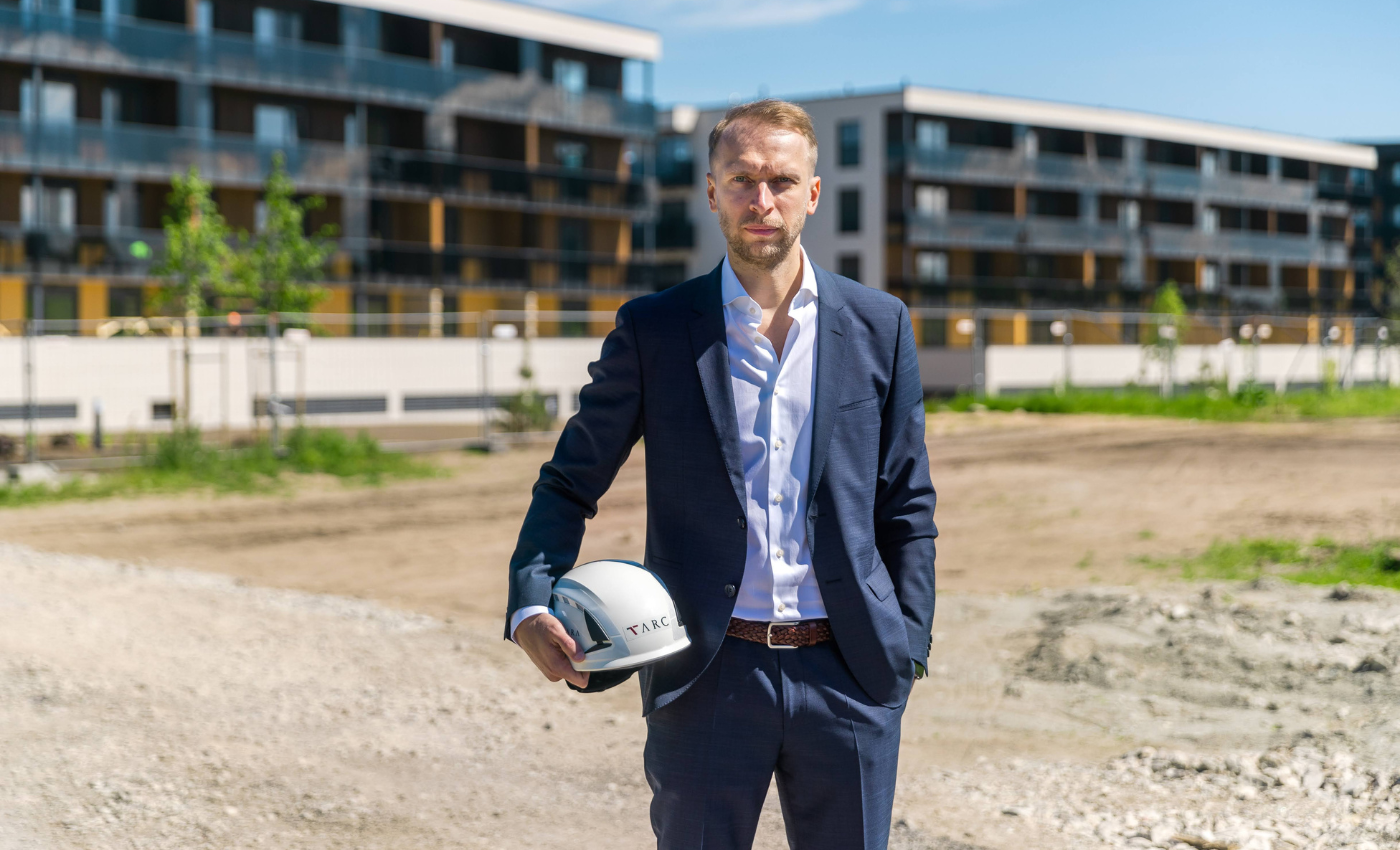
What should you consider when buying a new home?
Projection defects, settling issues and soundproofing are just some of the challenges new home buyers may encounter. But how to assess the construction quality when choosing an apartment to avoid future problems? Lauri Männiste, CEO of the construction company Arco Tarc, shares advice on what aspects of building quality should paid attention to when buying a new home.
According to Männiste, ensuring quality in construction is not a one-time task – instead, it begins with planning activities and selecting suppliers and partners. “Quality control is a highly systematic process that operates on multiple levels – subcontractor, main contractor, and supervision. It’s like a multi-layered filter that prevents any major flaws from slipping through,” he explains and adds, that such systematic approach ensures both aesthetically pleasing and lasting results in construction.
Everything already begings in the design phase
Männiste believes that involving the construction company in the design process is essential to ensuring the durability of buildings, as this brings in practical experience and knowledge. “It’s important to focus not just on the appearance of the building, but also on how it will hold up over the years,” Männiste emphasizes the importance of involving builders in the planning and design phases.
When discussing the technologies and materials used in construction, he points out that while innovation and modern design are important, durability and functionality are even more crucial. In the long run, construction quality will significantly impact the need for repairs or renovations. “Wood is being used on building facades more and more, but it’s often either processed incorrectly or used at inappropriate locations. In addition to losing its aesthetic appeal, this results in high maintenance costs for the building owner,” he explains. “The lifespan of some products or materials is simply longer than others. For example, facade plaster and plastic windows will likely need replacing sooner than a stone facade and wood-aluminum windows,” Männiste adds, giving examples of differences in materials.
The CEO of Arco Tarc believes in building as if you were building for yourself. “Many of Arco Vara’s employees have purchased apartments in our developments, so we’re able to practice this principle daily,” he says.
How can home buyers prevent common issues?
Männiste explains that the most common problems for home buyers arise from settling of the building and its structures. These issues, such as small cracks or the need to adjust doors and windows, typically appear within the first year or two and are covered by the warranty period. “To prevent such issues, the correct technologies must be used during the construction process, and proper conditions, such as appropriate humidity and temperature levels, must be ensured during both construction and use periods,” he explains.
Another type of problem home buyers may face includes defects in planning or accidents, such as pipe leaks, which can lead to significant damage. “Systematic checks during construction help prevent these unexpected issues,” says Männiste.
Noise and sound resistance in apartment buildings are also important factors home buyers should consider. Männiste notes that while the standard construction requirement for sound insulation between apartments is 55dB, this doesn’t guarantee complete soundproofing. However, choices made during the planning and construction phases can improve sound insulation. “In our latest developments, we’ve designed partitions to be a few decibels higher to provide a better result for the customer,” he shares.
Since evaluating the construction quality of an apartment based solely on visual inspection can be difficult, Männiste advises home buyers to conduct thorough background research on both the developer and the construction company to understand their previous projects and quality. “From aside, it is challenging to assess the quality of a building; you need to be a specialist or to be involved in the process. However, it is possible to thoroughly inspect everything inside the apartment – such as the quality of finishes, how the technical systems function, and what’s behind the suspended ceilings,” he advises.
Efficiency and sustainability are the keywords in the future of the construction field
According to the CEO of Arco Tarc, the rise labor costs pressure finding ways to enhance construction efficiency. “Efficiency is being sought through factory-based production, and digitalization has introduced new techniques for design and construction management,” Männiste explains. “Additionally, building information modeling software plays a major role in identifying errors and allows for easy processing of all project data,” he adds.
In a global view, efforts are being made to limit the use of construction materials with a large carbon footprint. Since new construction projects are not getting cheaper, Männiste foresees a future with more focus on renovation. “Various regulations are restricting the use of energy-draining building materials and promoting renewable and reusable materials, such as wood,” he notes.
In addition, measuring the carbon footprint of buildings will also become mandatory, helping developers better understand and reduce the environmental impact of new constructions. “The Rannakalda development was one of the first projects in Estonia where such a calculation was carried out,” Männiste says. The carbon footprint study, based on data from the Rannakalda development in the Kodulahe district near Stroomi beach, showed that the largest climate impact comes from the building’s operational energy (57%), followed by the production of construction materials (33%).

